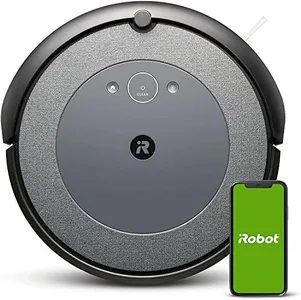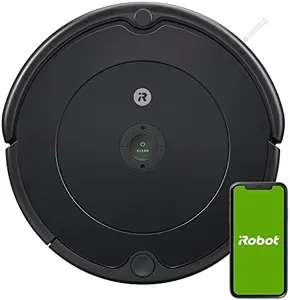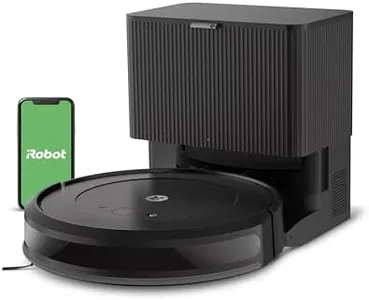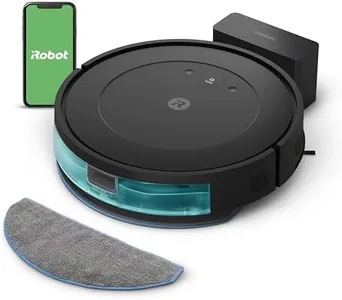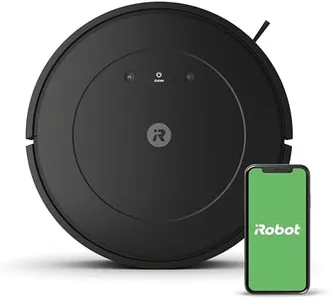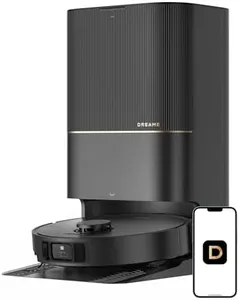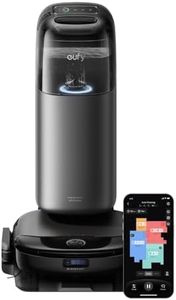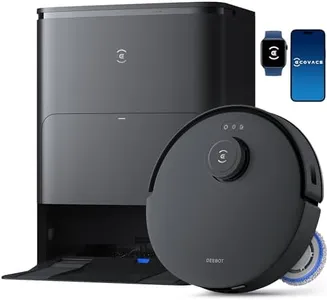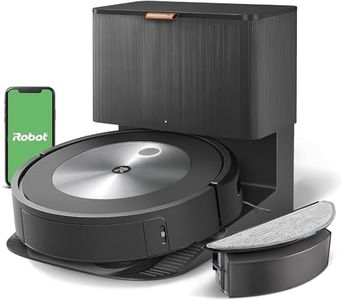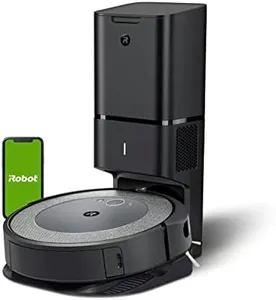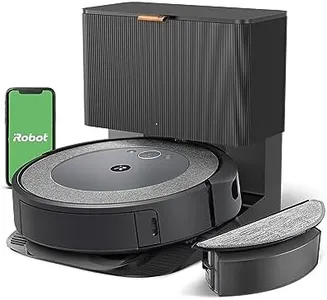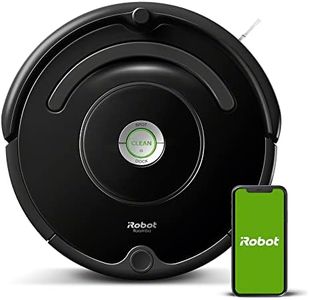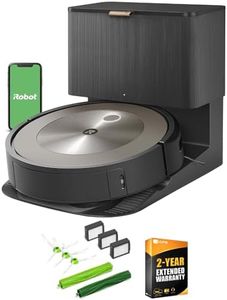10 Best Irobot Robot Vacuums 2025 in the United States
Our technology thoroughly searches through the online shopping world, reviewing hundreds of sites. We then process and analyze this information, updating in real-time to bring you the latest top-rated products. This way, you always get the best and most current options available.

Our Top Picks
Winner
iRobot Roomba Combo i5 Robot Vacuum & Mop - Clean by Room with Smart Mapping, Works with Alexa, Personalized Cleaning Powered OS, Ideal for Pet Hair, Roomba i3 Old
Most important from
13526 reviews
The iRobot Roomba Combo i5 Robot Vacuum & Mop is designed for those looking for a convenient, automated solution to keep their home clean. Its powerful 10x Power-Lifting Suction ensures effective dirt and pet hair removal, making it ideal for pet owners. The battery life of 75 minutes is decent, enough for most cleaning tasks, and the robot will resume cleaning after recharging if it didn't finish the job.
Smart navigation using Imprint Smart Mapping allows it to clean specific rooms on demand, and the robot adapts to various floor types with its Dual Multi-Surface Rubber Brushes that prevent tangles with pet hair. One drawback is the relatively small dustbin capacity of 0.1 gallons, which may require frequent emptying, especially in larger homes.
The integration with Alexa and Google Assistant provides convenient voice control, and the robot can learn your cleaning habits to offer personalized cleaning schedules. However, it lacks some advanced features of newer models, like obstacle avoidance. The iRobot Roomba Combo i5 offers a strong balance of performance and smart features, making it suitable for busy households, especially those with pets.
Most important from
13526 reviews
iRobot Roomba 692 Robot Vacuum - Wi-Fi Connectivity, Personalized Cleaning Recommendations, Works with Alexa, Good for Pet Hair, Carpets, Hard Floors, Self-Charging
Most important from
32328 reviews
The iRobot Roomba 692 Robot Vacuum makes cleaning more convenient with its Wi-Fi connectivity and compatibility with voice assistants like Alexa and Google Assistant. It is particularly well-suited for those who have a mix of carpets and hard floors, as it features an automatic adjusting cleaning head and dual multi-surface brushes. The 3-stage cleaning system, coupled with Dirt Detect Sensors, ensures a thorough clean, especially in high-traffic areas.
With a runtime of 90 minutes, it offers a decent battery life for most small to medium-sized homes, and it conveniently self-charges by docking itself when the battery is low. The adaptive navigation system allows it to maneuver around furniture and avoid falling down stairs, making it highly efficient in various home settings. However, the dustbin capacity is relatively small, which may require more frequent emptying, especially in homes with pets.
The Roomba 692's strong points include its smart features and ease of use, such as scheduling cleanings via the iRobot HOME app or using voice commands. On the downside, it lacks advanced mapping technology found in higher-end models, which means it may not be as precise in its cleaning paths. This robot vacuum is best suited for users looking for a budget-friendly, reliable cleaning assistant without the need for intricate navigation technology.
Most important from
32328 reviews
iRobot Roomba Vacuum 2 Essential Robot with AutoEmpty Dock, 3 Suction Levels, Latest Floor Tracking Sensors, and Compact Design (Black)
Most important from
26541 reviews
The iRobot Roomba Vacuum 2 Essential is a solid choice for anyone looking to simplify their cleaning routine with a robotic vacuum. One of its standout features is the AutoEmpty dock, which allows the vacuum to empty its dustbin automatically into a bag that can hold dirt for up to 60 days. This means less frequent maintenance for users. Its 3-Stage Cleaning System, featuring multiple suction levels and specialized brushes, efficiently tackles various floor types, ensuring a thorough clean even in corners.
Battery life is impressive, with the device cleaning for up to 120 minutes before needing a recharge. Plus, it smartly returns to its dock to recharge and resumes cleaning where it left off, which is a huge convenience. The navigation technology is well-designed; it methodically cleans in rows and avoids obstacles, which means fewer collisions and more efficient cleaning.
On the flip side, some users might find the requirement for a 2.4 GHz network for setup and operation a bit limiting, especially if they primarily use a 5 GHz network in their home. Additionally, while it has smart features accessible via the iRobot Home App, some might find the app's functionality basic compared to other smart devices. Noise levels are reportedly low, allowing for quieter operation, but if you're looking for a vacuum with extremely powerful suction for heavy-duty cleaning, some rivals may provide better performance. The iRobot Roomba Vac 2 is ideal for busy individuals who want a reliable, self-sufficient cleaning robot that requires minimal hands-on effort, making it a great addition to modern smart homes.
Most important from
26541 reviews
Buying Guide for the Best Irobot Robot Vacuums
Choosing the right robot vacuum can make a significant difference in maintaining a clean home with minimal effort. When selecting a robot vacuum, it's essential to consider various features and specifications to ensure it meets your specific needs. Understanding these key specs will help you make an informed decision and find the best fit for your home and lifestyle.FAQ
Most Popular Categories Right Now
